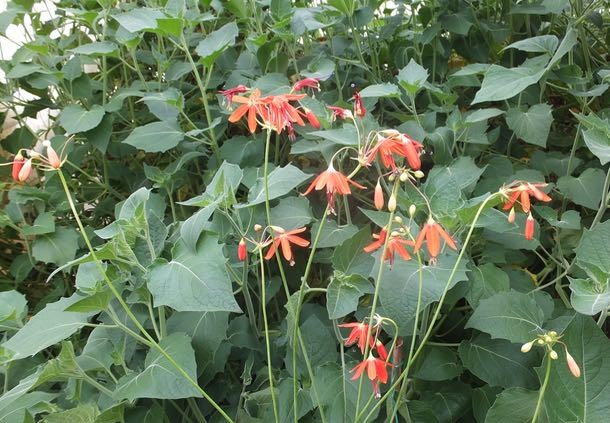
A tub of Coral Drops can add one of the very brightest splashes of colour to your greenhouse or conservatory from late summer till early winter. Very easy to bring into flower and then continuing over weeks even months this was introduced from Mexico in 1850 and soon became popular in great gardens. Then as with so many flowers it lost favour and almost disappeared. Fortunately it’s now available again and from several suppliers.
Bessera elegans (named after a Professor of Botany) is very much a tropical flower and not at all hardy. However it can be over-wintered easily if dried down in it’s compost and the tub kept frost free. In a warm summer a tub of Coral Drops could be moved outdoors but I’d recommend you bring it back under cover for flowering as these are so delicate and easily spoilt.
Although in theory as this is a true species you could grow it from seed however this is not as widely available as the ready grown corms. As with say Gladioli these are replaced by their offspring and so growing on the wee offsets is the quickest way to increase your number.
Bessera is a little demanding as to compost preferring a very free draining sharp sand and leaf mould type mix (in place of the traditional peat and sand) though it is not lime hating as such only use warm rain water. Regular watering from when the first growths start in spring is crucial with a light feed included fortnightly. Warmth and light are essential, this sulks and fades in dim or dank conditions, be vigilant in autumn to dry the corms off as the leaves wither, do not let them mould as this can travel down to the corms.
Remarkably pest and disease free the only difficulty with Coral drops is the foliage consists of very long rather fine tubular leaves, these can splay but then risk kinking so are best supported with canes and twine. The blooms are also long stemmed and are excellent for cutting (seal the cut stem with boiling water or a flame immediately) as they last well.
For the collector there are a couple of other, really rare, species also from Mexico: B. Herbertii and B. miniata with purple and white and scarlet and white flowers.


